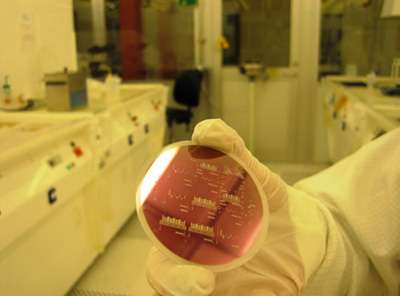A new model for quantum noise

The National Physical Laboratory (NPL) has published research in Nature Communications that updates one of the most fundamental concepts in the physics of quantum electronic devices - the standard tunnelling model (STM).
The STM was introduced in the 1970s to describe the thermal properties of glass at temperatures close to absolute zero. At these low temperatures quantum mechanics takes over from classical physics and strange properties begin to emerge. Quantum tunnelling is one such property and describes how atoms can cross barriers that they should not be able to according to classical physics.
The performance of many electronic devices is hampered by a type of low frequency noise known as 1/f noise, or flicker noise. This is thought to be caused by two-level states, quantum systems where an atom, for example, can exist in exactly two states simultaneously. The STM predicts that, as temperatures decrease, this noise should also decrease and eventually vanish completely.
New measurements made in this research, over longer time scales than previously possible, contradict this prediction, showing an increase in noise at low temperatures. The measurements were made possible by implementing an ultra-stable frequency-tracking technique used in atomic clocks and by producing a superconducting resonator insensitive to fluctuations in temperature.
The measurement results suggest that the STM model fails at the extremely low temperatures and low powers that devices for quantum information processing and detecting single particles are operating at.
To account for these results, NPL scientists and their collaborators are proposing a new model, which includes significant interactions between two-level systems. The interactions lead to spectral diffusion which alters the properties of the resonator. As well as explaining the measurement results from this work, the new model also explains results of other recent studies concerning qubits (quantum bits), the building blocks of quantum computing.
Cutting-edge quantum technologies in areas such as computing, communications, navigation, timing and information security require incredibly sensitive measurements in order to develop into commercial applications. NPL continues to work to advance these measurements and carry out the fundamental science to underpin them.
More information: "Evidence for interacting two-level systems from the 1/f noise of a superconducting resonator." J. Burnett, et al. Nature Communications 5, Article number: 4119 DOI: 10.1038/ncomms5119. Received 14 November 2013 Accepted 14 May 2014 Published 17 June 2014
Journal information: Nature Communications
Provided by National Physical Laboratory





















